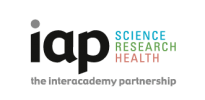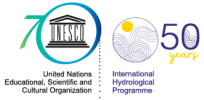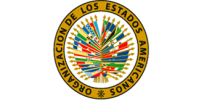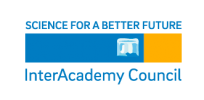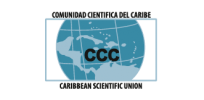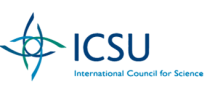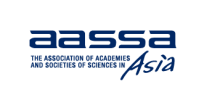Gender and Water
Women scientists and engineers, as well as women at the grassroots are essential participants in global water management and have important roles to play in its management, conservation and use. Women are often excluded from decision-making processes in the management of agricultural water and natural resources. Studies show that there tends to be little attention paid to social diversity and little differentiation among groups of water users. As a result, data and information on water use tends not to be disaggregated by gender or other social, ethnic or capacity grouping (see below).
Most of the world’s 1.2 billion poor people lack access to safe and reliable water, two thirds of them women. Diversion of water for industry, agriculture, and power generation reduces availability of water for domestic use, making it even more difficult for the poor to access water. Natural disasters, desertification, increasing stress on the land from a growing population, and climate change are also affecting the availability of water and the reliability of rainfall (IFAD, 2001 and 2007; Lambrou and Nelson, 2010; UNCTAD, 2011).
Worldwide, over 2.6 billion people still lack access to flush toilets or other forms of improved sanitation. Availability of clean water sources is improving in rural areas although it hasn’t yet caught up to 94% availability in urban areas. Increased toxicity of water and lack of systematic planning concerning its use reduce its availability and add stress to water systems (United Nations, 2012).
Lack of access to clean water leads to increasing health problems and difficulty in providing domestic needs. Unsafe water and sanitation conditions are responsible for 80 per cent of all sickness in the world: water-borne diseases kill 3.4 million people annually, mostly children. Diarrhea, malaria, schistosomiasis, arsenic poisoning, trachoma and hepatitis are all wide-ranging diseases which can be prevented with access to clean water and health-care information (Khosla and Pearl, 2003). Sanitation and hygiene tend to be women’s responsibility, and women and girls also walk for hours to fetch drinking water. This not only takes time away from other tasks (such as education), but also exposes them to possible violence and health hazards (IFAD, 2007).
In most cultures, women and men have different roles and responsibilities in the use and management of water. Women use water for production, consumption and domestic purposes, including cooking, cleaning, health and hygiene, and, if they have access to land, also for growing food. In rural areas, women and girls walk long distances to fetch water, often spending 4 to 5 hours per day carrying heavy containers and waiting in lines. The burden of fetching water (and firewood) inhibits their access to education, income generation, cultural and political involvement, and rest and recreation. A plenary panel held in conjunction with the World Summit on Sustainable Development stated that “women and children and vulnerable populations in general are bearing the brunt of the negative impacts of the lack of action on water and sanitation.” The priorities of men with regard to water use mainly revolve around agriculture or livestock rearing
(UNCTAD, 2011; Both ENDS, 2006).
For example, in Nicaragua women are responsible for most tasks involving water, including cooking, cleaning, laundry, and caring for the sick, elderly and children. Female residents of poor, urban neighborhoods obtain water for their families from community faucets that may function for only a few hours a day and service from one to two hundred families in the city. Consequently, women become responsible for rationing water in the case of a drought or water shortage. Some women might also obtain water from trucks that deliver once or twice a week. These women carry multiple pails of water home every day, usually with only the help of their children. Many women also have income-generating jobs, either maintaining home businesses or working low-paying factory jobs that produce goods for first-world consumers, further complicating their ability to provide their family with clean water. Likewise, women in rural areas face harsher conditions. Approximately 72 percent of residents in those areas do not have regular access to clean water, and typically obtain water from community wells, irrigation ditches, or nearby rivers, lakes, and streams, often becoming exposed to disease from pollutants.1
Other water issues include degradation of ecosystems, polluted water, and contamination of groundwater and aquifers. Clean drinkable water is in increasingly short supply.
Privatisation is posing obstacles to women’s use of water for household, community and productive responsibilities. Increases in water prices, cut-off of water supply due to unpaid bills; lack of accountability mechanisms for users; deterioration of water quality; and hygiene are some of the results.
It is also critical to ensure that more women scientists are involved as designers, experts and implementers of water projects. This involves both targeting women to be trained as water scientists and engineers, and making efforts to identify women candidates and employ them in leading positions in the water projects in IANAS countries.
References
- Both ENDS. Effective gender mainstreaming in water management for sustainable livelihoods: From guidelines to practice. Amsterdam: Comprehensive Assessment of Water Management in Agriculture (CA) and Both ENDS (BE), 2006.
- IFAD. Securing water for improved rural livelihoods: The multiple-uses system approach. Rome: IFAD, 2007.
- IFAD. Rural Poverty Report 2001: The challenges of ending rural poverty. Oxford: Oxford University Press, 2001.
- Khosla, Prabha and Rebecca Pearl. “Untapped Connections: Gender, Water and Poverty: Key Issues, Government Commitments and Actions for Sustainable Development.” New York: WEDO. 2003.
- Lambrou, Yianna and Sibyl Nelson. Farmers in a changing climate. Does gender matter? Food Security in Andhra Pradesh, India. Rome: FAO, 2010.
- UNCTAD. Applying a Gender Lens to Science, Technology and Innovation. Geneva: UNCTAD, 2011.
1https://www.coha.org/water-in-latin-america-the-importance-of-gender-relations/

